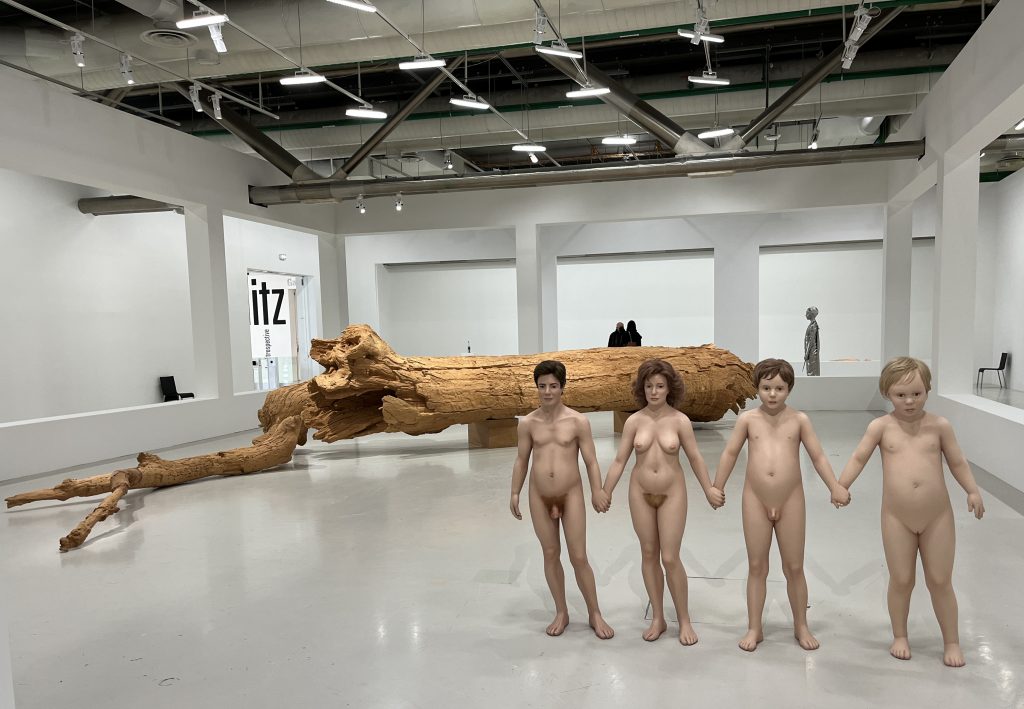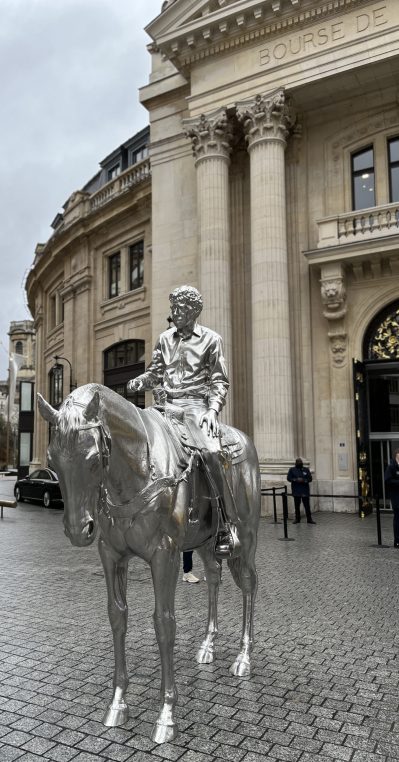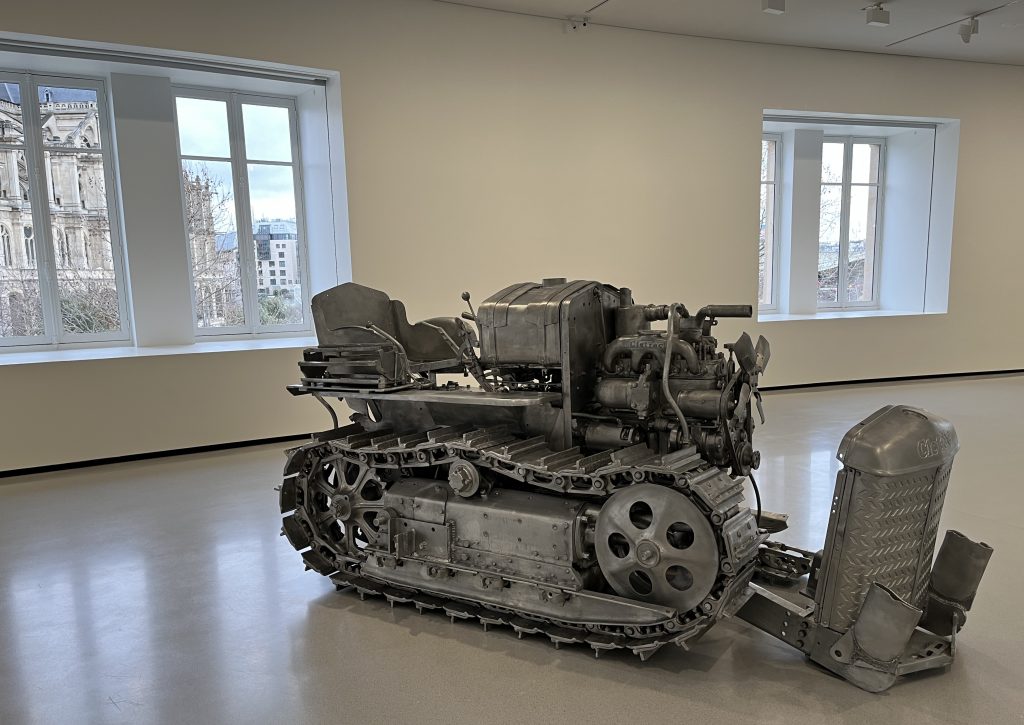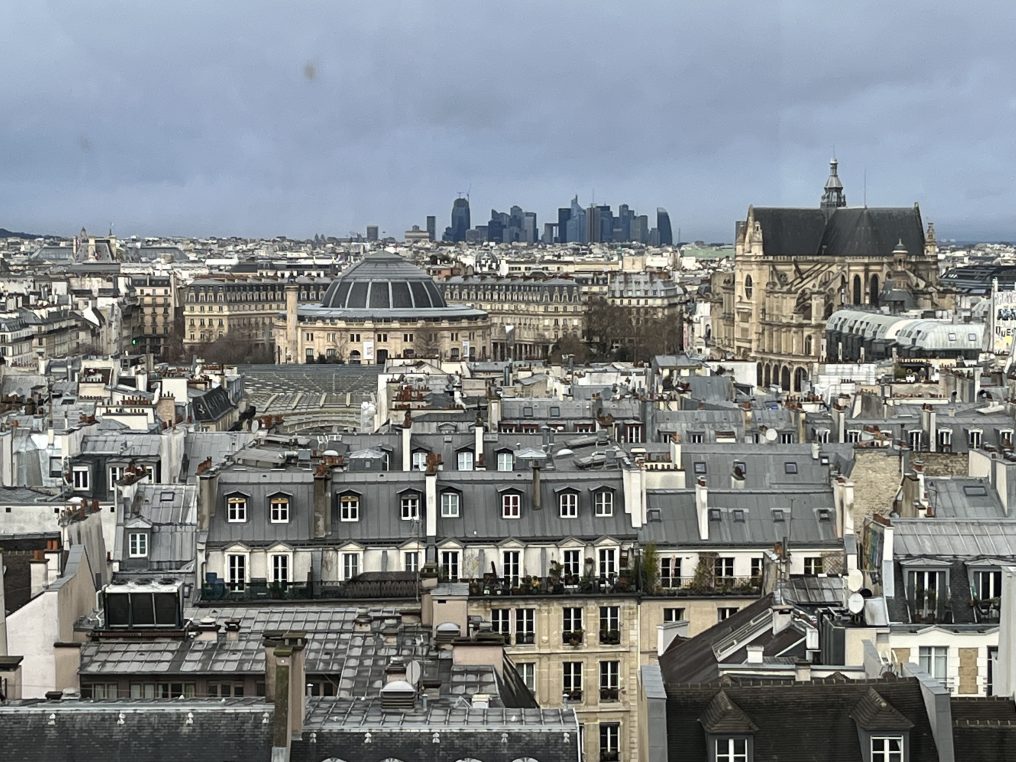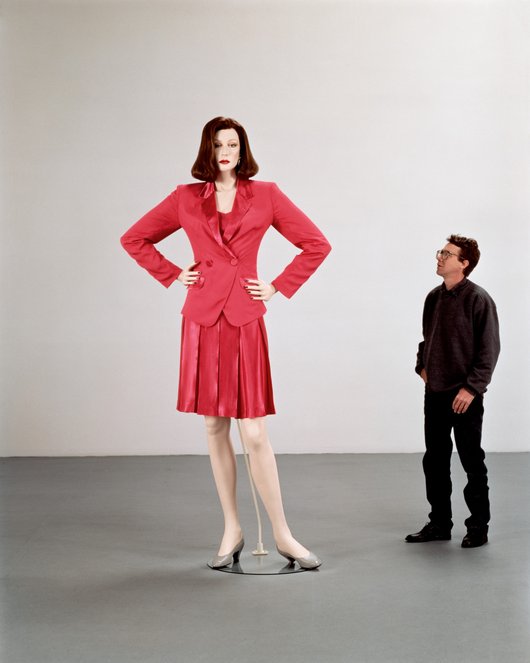I first started with the Charles Ray show at Centre Pompidou which occupies a large part of the 6 th floor gallery and walked down to the Pinault Collection at Bourse du Commerce to see more of this Chicago born Californian artist who has suddenly taken over the Paris contemporary art scene. It is quite a lovely way to go through the gardens of Saint Eustache and the fifteen minute walk gives you the time to digest the first sculptures and wonder “Do I really like this artist”? At first I thought this would be another gimmicky event Jeff Koons style but when I started reading his thoughts, I understood a bit more of what he is all about. One thing seems sure, collector Pinault is the impulse for this exhibition at Musée National d’Art Moderne. Are French museums becoming the puppets of private collectors?
In both spaces you are met by engines. At Pompidou it is an automobile involved in a fatal collision called “Unpainted sculpture” for which the artist molded every piece, with every dent and crumple. He felt that once the car is perfectly reproduced, the drama to which it is linked (a dead driver) fades away. “The purity of the form puts the chaos at a distance”, he says. At Pinault, it is “Unbaled truck”, a crashed truck, the recreation of one he used in the past. Upstairs, a tractor is an evocation of the artists’s childhood and his memory of playing on an abandoned tractor, of time passing, a testimony to rural America.
Then come “Fall 91”, two sculptures of a woman which is so tall that the viewer is suddenly small and the artist also. At Pompidou she is dressed in red, at Pinault she wears a white jacket over a black skirt. “Tabletop” 1988, at Pinault is made of wood with a pot of flowers and a shaker, at Pompidou it is called “How a table works”, 1986, and it is a skeleton of a table with similar items.
There are both religious sculptures (a crucified Christ in paper and without a cross) and sculptures of a boy inspired by antiquity like “School Play”, the son fo a friend who acts in the end of the year play. There are quite a number of self portraits including a series of 16 color photos of Ray wearing all his clothes, 1973, and “Yes”, 1990, a picture of himself taken under the influence of LSD.
Charles Ray uses aluminum, stainless steel, fiberglass, cypress wood, and more recently handmade paper, thus questioning the use of different mediums for his sculptures. There are charming pieces of children playing with a beetle car, or holding a frog, which are reminiscent of Greek sculpture. Both spaces are striking and the large pieces find a perfect frame in both architectural beauties. I was touched by a small window at Pompidou showing “Eggs” which includes three sculptures of a “Hand Holding Egg” in porcelain, a “Handheld bird” in painted stainless steel and a “Chicken” in painted stainless steel and porcelain.
This is how he explains the work: “Chicken pits two forces against each other. The curiosity of the viewer peering in is met by the energy of the chicken birthing out….. and I think it finally answers the question: What came first, the chicken of the egg?”
Both exhibitions are certainly fun and you can decide for yourself if you like this artist or not? I heard Pinault on television saying they had known each other for a long time and become close friends. It is certainly a good art history sum up of classical forms and familiar contemporary images, and a perfect visit to take children on in the next two weeks of school break.
Musée National d’art Moderne until June 20 and Pinault Collection until June 6.
Share this Post

